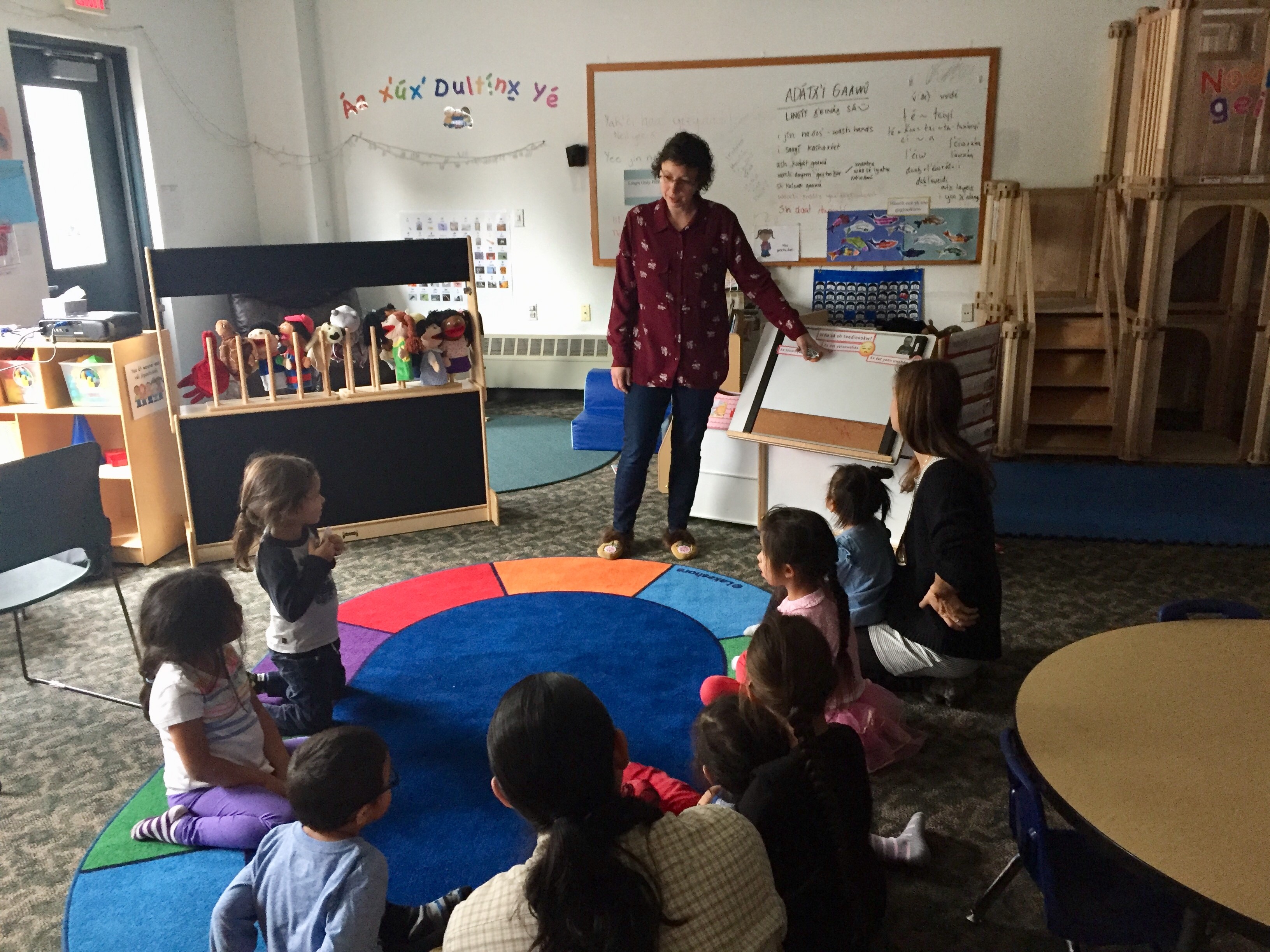
As plans for reopening school buildings in the fall come into focus, the American Academy of Pediatrics is pushing for in-person schooling.
And pediatricians in Alaska agree. The doctors say they are weighing the costs and benefits of keeping children away from school buildings. It may be counter-intuitive to have public-health experts advocate for sending hundreds of students, faculty, and staff back into school buildings.
In fact, CDC guidelines, list “full sized, in-person classes, activities, and events” as the highest-risk setting for schools. But the American Academy of Pediatrics says schools should prioritize in-person classes, wherever it’s safe to do so, and work towards that goal as much as possible.
Dr. Michelle Laufer is a pediatrician at Medical Park Family Care in Anchorage. She agreed with the academy’s advice and said it should be considered along with CDC guidelines as part of a larger risk-benefit analysis.
“I absolutely see the perspective of people who think that the risk is too high, and I think maybe in some communities it is too high,” Laufer said. “But I feel like we have to consider the risk of not having kids in school as a significant risk.”
The academy points out kids who are not in school are at risk of a long list of problems including social and emotional damage from feeling isolated and not having enough to eat. That’s on top any academic losses.
Laufer said those risks, and the potential impact of keeping kids out of school for an extended amount of time, is underappreciated.
“I think that most people don’t realize how much of a role school plays in that regard,” Laufer said. “Everyone who works at a school, even down to the janitors and such, keep an eye on kids and know kids and know when things aren’t going well. Losing that as a resource in a child’s life is huge.”
Dr. Matthew Serna is a pediatrician at Anchorage Pediatric Group, and he also agrees with the guidelines. He said, while COVID-19 is still a very new disease that is constantly changing, medical experts are learning more about how the disease affects children.
“There’s some more evidence now that children, while they may be able to spread it, may not be as much of a feared super-spreader population as was originally thought back in the early spring when COVID was just starting to take shape,” Serna said.
Serna also said when children do contract the disease their symptoms are usually mild, if they have any.
But schools aren’t just for kids, there are adults there too. Serna said the key to keeping everyone healthy, and keeping schools open, is for adults to continue to follow the protocols that have been in place, like physical distancing, frequent hand washing, and wearing masks.
Serna, a father to a three-year-old and a one-year-old, has had conversations with his wife about whether to send his children back to daycare. Serna said no situation is going to be 100 percent risk-free and every family has to decide their comfort level with the risk.
“I encourage parents to have the same discussion, because if you look for evidence, it’s taking shape, but there’s not a ton still that will that will make you feel 100 percent confident one way or the other,” Serna said. “I think it truly just depends on what your household situation like and what is your comfort level with the risk.”
Dr. Mishelle Nace is the Pediatric Medical Director at Tanana Valley Clinic in Fairbanks. Nace agrees with Serna and said schools should try to reopen while also giving families options.
“There’s no right one perfect answer that fits every age group from kindergarten, preschool, up until college,” Nace said. “We have to be agile, depending on the environment, [and] work together to make this the safest possible for our community.”
President Donald Trump has said that he would put pressure on governors to reopen schools in the fall. Trump also threatened to cut federal funding if schools do not reopen – although that is not something the President has the power the do.
However, that’s one of many stumbling blocks for state governments: figuring out how to pay for the cost of additional space, cleaning, and staff that would be necessary.
Differing opinions, guidance, logistics is part of what makes this task so challenging. Nace said school districts need grace as they grapple with these tough issues.
“What an incredible responsibility the school district has to make these decisions,” Nace said. “They need their partners to be able to help, they need the parents and the children, they need the staff members, they need the medical community, and they need our governing bodies to be able to help make these decisions so that we can do what’s right.”
Making those decisions needs to include looking at broader policy choices said Dr. Janet Shen, a pediatrician at The Children’s Clinic in Anchorage.
Shen points to opening restaurants, bars, gyms, and loosening restrictions on out-of-state travelers that have led to an increase in positive coronavirus cases.
Shen said the academy was right to encourage in-person schooling, but she said if the community wants to schools to reopen, and stay open, making it safe to do so it has to be a priority for everyone, not just the schools.
“We can put our kids back in school but let’s not let’s not have the adults in the family engage in any high risk behaviors that will then get their kids sick,” Shen said. “Or if your kid has symptoms of being ill don’t just give them a Tylenol and send them to school.”
Shen said there will have to be some sacrifice from the rest of community in order to keep school communities healthy. Without that, it’s possible there will be another school closure.
